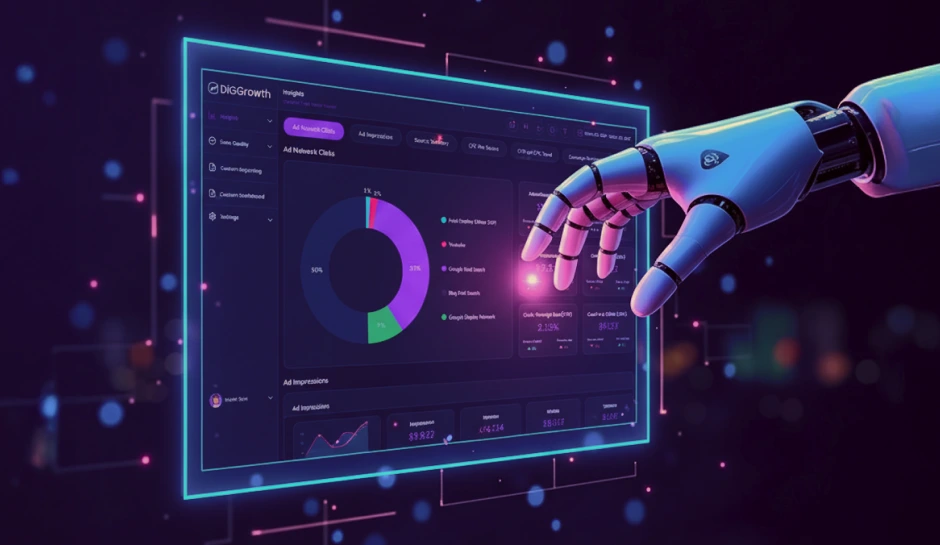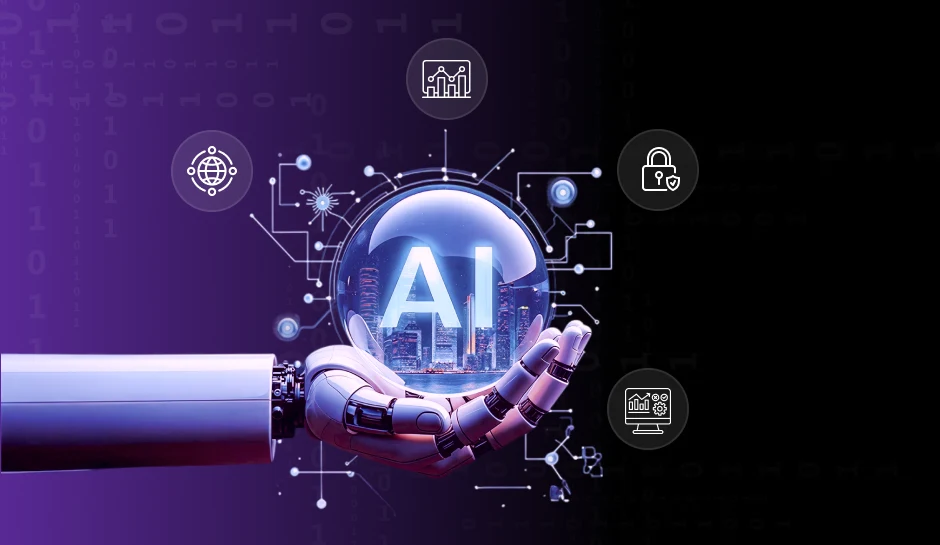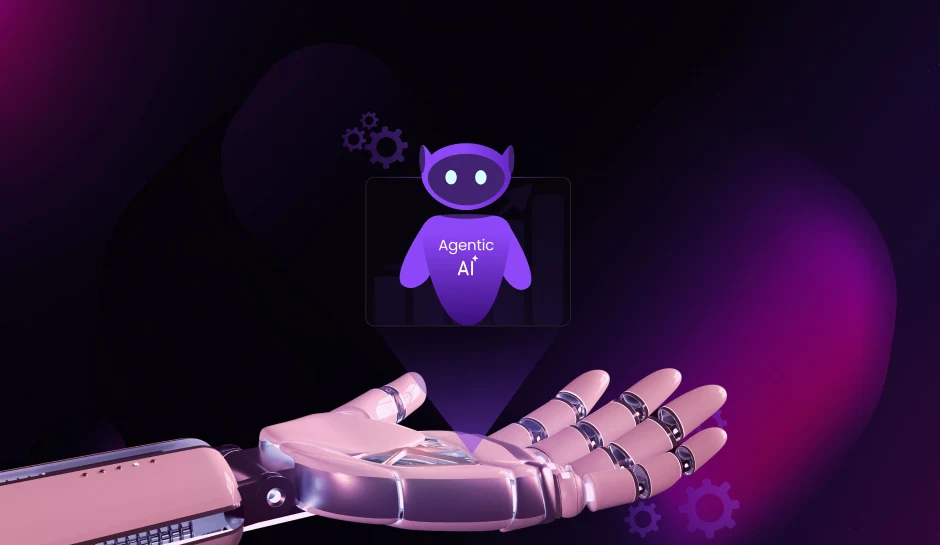
Revolutionizing Marketing ROI Measurement Through Attribution Model Machine Learning
Traditional models overlook the complexity of B2B buyer journeys. Attribution model machine learning helps you connect the dots between touchpoints, giving you the clarity to optimize strategy, influence pipeline growth, and prove real marketing impact. Read on.
You know the numbers. Click-through rates look strong, campaign performance hits the mark, and yet your ROI reports leave you questioning what really worked. The issue often is not your strategy. It is the way your success is being measured.
Traditional attribution models were built for simple journeys. Buying B2B is anything but simple. Your prospects are influenced by a mix of content, conversations, and unseen touchpoints that do not fit neatly into first-click or last-click logic.
This is where Attribution Model Machine Learning offers a better path.
By learning from real behavior, machine learning models surface the true value of each interaction across the buying cycle. You stop relying on assumptions and start seeing what actually drives conversions and revenue.
In this blog, you will explore how Attribution Model Machine Learning helps you measure smarter, decide faster, and grow with confidence.
What Is Attribution Model Machine Learning?
Attribution Model Machine Learning is not just a technical upgrade. It is a mindset shift. You are no longer settling for simplified models that hand credit to the last click or divide it evenly across touchpoints. Instead, you are using your data to ask better questions, ones that uncover the real story behind buyer decisions.
You already know B2B journeys are complex. But what you might not realize is just how much influence you are missing in your current reporting. Buyers often take actions that are never tracked, or at least not properly credited. Think about the research they do anonymously, the internal conversations they have after viewing your content, or the sales call that reconnects them with a forgotten whitepaper. These are not edge cases. They are everyday behaviors that shape deals, and they are often invisible to rule-based attribution.
Machine learning attribution models work by identifying patterns across these hidden layers. They do not just count clicks or form fills. They learn how different interactions influence outcomes over time, across different personas and buying stages. That means you are not just seeing what happened, you are learning why it worked.
Attribution Model Machine Learning gives you the power to see beyond surface-level metrics. It helps you allocate budget more intelligently, align marketing and sales around what actually converts, and optimize campaigns based on truth, not assumptions.
Hidden Factors Machine Learning Attribution Captures
- Time Between Touchpoints: Understand how delays or gaps impact conversion likelihood
- Multi-Person Engagement: Track influence across buying committees, not just individuals
- Revisit Behavior: Value builds over time as buyers return to content
- Silent Research: Credit actions that occur without form fills or tracked clicks
- Assistive Interactions: Identify touchpoints that do not close deals but move them forward
- Sequence Sensitivity: Measure how the order of interactions affects buyer momentum
Why Machine Learning Works for B2B Marketing
You are not just influencing one decision-maker. You are engaging an entire team over weeks or even months, often across multiple channels and unseen touchpoints. Traditional attribution models simplify that complexity and leave you with partial answers.
Machine learning attribution helps you see what really drives results by identifying behavioral patterns across the full journey. It learns from how actual prospects interact with your brand before, during, and even between tracked activities. Whether it is a product page visited weeks after a webinar or a whitepaper passed around internally, the model connects these dots and assigns value based on their true contribution to revenue.
You are not locked into static rules. As your funnel evolves, the model adjusts. It works with your data, not against it, giving you a more accurate, agile, and complete view of performance.
Key Components of a Machine Learning Attribution Model
To make attribution meaningful in a B2B context, machine learning models rely on a few foundational components:
- Input Data Quality: Machine learning is only as good as the data it receives. Clean, consistent inputs from CRM, marketing automation, and engagement platforms are essential.
- Event Weighting Logic: The model evaluates how different actions like email opens, demo requests, or return visits correlate with revenue outcomes, not just with lead generation.
- Sequence and Timing Recognition: It learns how the order and spacing of touchpoints influence momentum, identifying which combinations actually move deals forward.
- Persona and Account Mapping: By connecting activity across roles within the same organization, the model captures true account-level influence instead of focusing only on individual users.
- Ongoing Model Training: It continuously updates based on new data, so your attribution stays aligned with how real buyers behave not how you assume they do.
Real B2B Use Cases That Traditional Attribution Misses
Traditional attribution models focus on the touchpoints that are easy to track, clicks, form fills, or last interactions. But B2B marketing is much more nuanced, and machine learning attribution reveals insights that these basic models miss. Here are a few examples:
Touchpoints in the Dark Funnel
There is a lot happening in the dark funnel, the moments when prospects engage with your brand but do not trigger any trackable actions. Think of a buyer sharing your case study on a private Slack channel, discussing your brand in a peer referral, or conducting research in organic search without converting right away. Machine learning attribution helps uncover the influence of these hidden touchpoints, giving you a fuller picture of how decisions are actually being shaped.
Long-Tail Nurture Journeys
In B2B, your buyers rarely make decisions on the spot. They engage with your content over time, coming back to educational resources and case studies long before they convert. Traditional models often miss this long-tail journey, crediting just the last touchpoint. Machine learning attribution, however, connects the dots between multiple content interactions, allowing you to see how sustained engagement over time contributes to conversions.
Late-Stage Acceleration
In many B2B sales cycles, deals do not close on the first touch, and often, the final push comes from strategic emails, demos, or sales calls. Traditional models might not give enough weight to these late-stage interactions. With machine learning attribution, you gain deeper insight into how specific activities, such as an email sent at the right moment or a demo that accelerates decision-making, help close deals faster.
Integrating Machine Learning Attribution Into Your GTM Stack
If you want machine learning attribution to deliver more than vanity metrics, it must be fully integrated into your go-to-market (GTM) stack. That means preparing your data, choosing a solution that matches your team’s capabilities, and embedding insights into daily operations.
Build a Reliable Data Foundation
Machine learning models rely on quality data. Before you apply any model, your systems need to speak the same language.
- CRM Integration: Ensure your CRM accurately captures lead, account, and opportunity-level data with consistent attribution to marketing activities.
- Marketing Automation Platform (MAP): Track every campaign, nurture sequence, and triggered action to map interactions to pipeline progression.
- Web and Event Analytics: Use tools like Google Analytics or first-party tracking to capture web behavior, session depth, and event triggers across the funnel.
- Data Hygiene Practices: Remove duplicates, enforce naming standards, fill gaps in attribution tracking, and normalize data formats across systems.
- Unified Data Layer: Consider using a CDP (Customer Data Platform) or a data warehouse to centralize and normalize information from multiple sources.
Choose the Right Approach for Your Team
Not every company needs to build a model from the ground up. The right choice depends on your team’s technical depth, growth stage, and attribution needs.
- Custom Models: Offer deep control and flexibility but require strong in-house data science resources and a longer time-to-value.
- Off-the-Shelf Tools: Platforms like DiGGrowth, Dreamdata, Attribution, and Bizible provide machine learning capabilities with ready-made infrastructure. These are ideal for mid-sized B2B teams looking for speed and scalability.
- Hybrid Approaches: Some tools let you bring your own data models or augment default algorithms—helpful if you want control without building everything internally.
- Scalability: Look for modular architecture, API access, and integrations with your broader GTM tech stack.
Make RevOps the Center of Activation
Revenue Operations is the connective tissue that ensures attribution insights turn into strategic action across teams.
- Cross-Functional Alignment: RevOps connects marketing, sales, and customer success to work from the same data truth.
- Insight Distribution: Attribution models should feed into dashboards used in pipeline reviews, campaign retrospectives, and leadership reporting.
- Budget Optimization: Use model outputs to guide quarterly budget shifts toward higher-impact channels and tactics.
- Feedback Loop: RevOps ensures teams continuously refine strategy based on attribution performance data, not assumptions.
Pro Tip- Select a machine learning attribution tool like DiGGrowth that aligns with your existing workflows and delivers insights directly into the platforms your teams already use. Prioritize seamless integration, real-time visibility, and ease of activation to ensure attribution becomes a driver of action, not just another data layer.
Challenges in Implementing ML Attribution for B2B
When implementing machine learning attribution in your B2B marketing strategy, several common barriers can hinder progress.
1. Siloed Data Across Systems
In many organizations, CRM, marketing automation platforms (MAP), web analytics, and other tools do not communicate effectively, leading to incomplete or inconsistent data. Without a unified data flow, machine learning models struggle to provide accurate insights, limiting their impact.
Solution: To solve this, focus on building a centralized data infrastructure. Ensure your tools and systems integrate seamlessly, allowing data to flow smoothly between marketing, sales, and customer success teams. Consider implementing a Customer Data Platform (CDP) or a data warehouse to unify disparate data sources. This creates a single source of truth that powers more reliable attribution insights.
2. Lack of Attribution Ownership
Marketing teams may focus on reporting campaign success, while sales teams emphasize lead conversion, creating a disconnect. Without clear ownership, attribution insights can be ignored or misused, reducing their effectiveness.
Solution: Establish a dedicated attribution champion within your organization someone who owns the strategy and ensures cross-functional alignment. This person should be responsible for overseeing the implementation of machine learning attribution, ensuring that insights are activated across teams, and fostering collaboration between marketing, sales, and RevOps. By having an attribution lead, you guarantee a more coordinated and actionable approach.
3. Overreliance on Vendor Black Boxes
Many off-the-shelf attribution tools, including those powered by machine learning, function as “black boxes,” providing results without full transparency into how decisions are made. This can create frustration for teams who need to understand why certain touchpoints are being credited or how the model is weighing different interactions.
Solution: Choose attribution tools that provide transparency into their algorithms. Look for platforms like DiGGrowth and Dreamdata that allow you to customize models and understand how different touchpoints and interactions are being weighted. Ensure that your chosen tool can integrate with your existing systems and give you the flexibility to adjust as needed. This transparency not only helps in improving the model but also builds trust within your teams.
Key Takeaways
- Traditional attribution models often fail to capture the full complexity of the B2B buying process, missing critical touchpoints that influence decisions.
- Machine learning attribution models go beyond surface-level metrics, providing deeper insights into the true value of each interaction across the buyer’s journey.
- Implementing machine learning attribution requires a unified data foundation, careful selection of tools, and cross-functional collaboration, especially through RevOps.
- Unlike static models, machine learning adapts over time, continuously refining its insights to align with the evolving dynamics of your sales and marketing efforts.
Conclusion
Machine learning attribution is not just a technical upgrade, it is a strategic shift that offers B2B marketers a deeper, more accurate understanding of their buyer’s journey. By moving beyond basic touchpoint tracking, this approach reveals hidden influences and uncovers what truly drives conversions. This allows for better decision-making, smarter budget allocation, and more meaningful alignment between marketing and sales teams. With the right strategy and tools, machine learning attribution can transform your approach to measuring and optimizing marketing ROI.
Looking to elevate your marketing attribution strategy? Let us help you get there.
Our experts at DiGGrowth can assist you in seamlessly integrating machine learning attribution into your existing systems, offering real-time insights and smarter strategies. Contact info@diggrowth.com to start optimizing your marketing today.
Ready to get started?
Increase your marketing ROI by 30% with custom dashboards & reports that present a clear picture of marketing effectiveness
Start Free Trial
Experience Premium Marketing Analytics At Budget-Friendly Pricing.

Learn how you can accurately measure return on marketing investment.
Additional Resources
How Predictive AI Will Transform Paid Media Strategy in 2026
Paid media isn’t a channel game anymore, it’s...
Read full post postDon’t Let AI Break Your Brand: What Every CMO Should Know
AI isn’t just another marketing tool. It’s changing...
Read full post postFrom Demos to Deployment: Why MCP Is the Foundation of Agentic AI
A quiet revolution is unfolding in AI. And...
Read full post postFAQ's
Implementation time depends on data quality and integration complexity. Typically, it can take several weeks to a few months, including training, testing, and aligning teams.
While a CRM enhances attribution accuracy, it is possible to use machine learning attribution models with other platforms like marketing automation or analytics tools, though results may not be as comprehensive.
By analyzing data-driven patterns, machine learning attribution identifies the most impactful touchpoints, helping optimize budget distribution towards high-performing channels and tactics, ultimately maximizing ROI.


